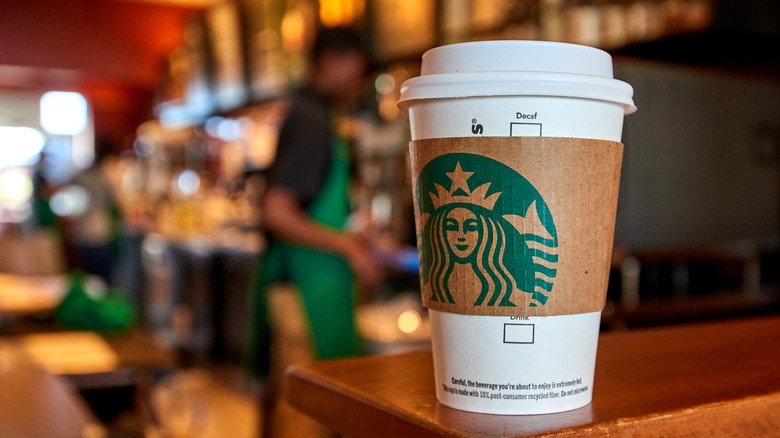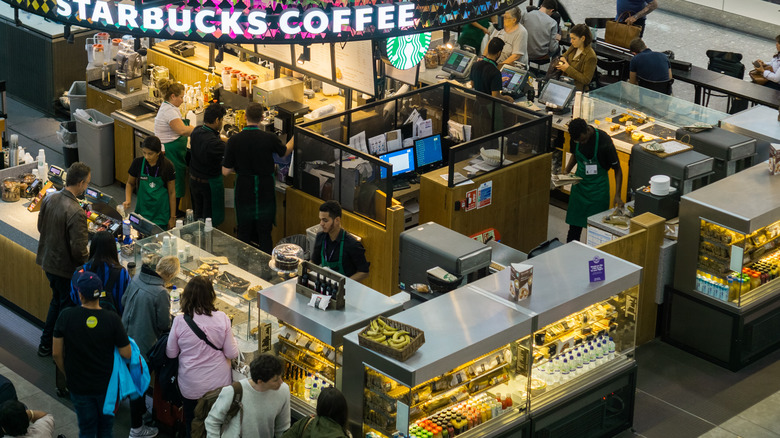The Dramatic Way Your Local Starbucks May Change
When Starbucks CEO Howard Schultz took over the reins from Kevin Johnson, he observed that the company made various tactical missteps over the preceding few years, per the Wall Street Journal. Despite these challenges, one positive thing that Johnson put in place is an innovation lab known as the Tryer Center.
Named for a gadget that can determine whether coffee beans are fully roasted, the Tryer Center is a 20,000-square-foot space separated from the rest of the ground floor of Starbucks' Seattle headquarters by an industrial-style metal door. Inside are many elements that might make up your local Starbucks store, except they're all on wheels and capable of being reconfigured at a moment's notice, per Starbucks. Even the walls are moveable at the Tryer Center, which the company describes on Starbucks Stories & News as a "secret sandbox for every flavor of innovation," where management works alongside Starbucks partners (i.e., employees, including baristas) "on everything from products to processes to store designs."
Between November 2018 and June 2019 alone, the Center tried out 130 innovations, dozens of which were rolled out to Starbucks stores. Rapidly changing market conditions over the past few years — including increased customer demand — have kept the bustling lab and the company's baristas busier than ever, per the Wall Street Journal. Starbucks' latest project is aimed at improving working conditions for its baristas, some of whom have formed unions to that end, to corporate chagrin. Notably, it also stands to change customer experience dramatically.
Frappuccinos may soon be delivered faster than your barista can misspell your name
Many Starbucks employees, or "coffee-making robots" as The Guardian reports that some of them not-so-cheerfully refer to themselves, have concerns about their working conditions. Starbucks management tried to assuage those concerns, including with pay raises, per Nation's Restaurant News. However, none of these changes have remedied some of the baristas' concerns, including the hard physical labor involved in making and dispensing the often-elaborate coffee drinks that customers love and come back for repeatedly. As the Wall Street Journal explains, even making a simple Caramel Macchiato requires no less than seven steps, several of which require baristas to navigate across the store multiple times. And let's not forget, " ... every second matters," as Natarajan Venkatakrishnan, who is in charge of the Tryer Center, points out — especially at the drive-through window, which represents about half of Starbucks sales.
"There's usually so much walking and bending that after eight hours, it hurts," one barista pointed out to the Wall Street Journal. And that is where the Tryer Center comes in at this juncture. "If employees spend less time running around cafes fetching foam and carrying 20-pound buckets of ice, maybe they will be happier working there," executives noted. Schultz is on board with that sentiment and has expressed hope that dramatic changes that simplify store processes for the sake of both baristas and customers will be in effect within three years.

